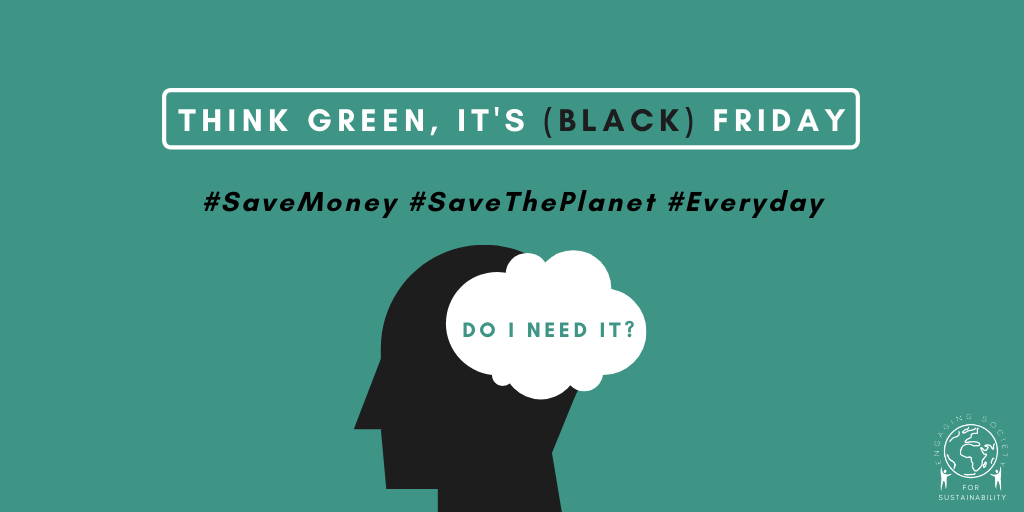TGIF - think Green, it’s (Black) Friday: life in the slow consumption lane
#SaveMoney #SaveThePlanet #Everyday
Escalating inane practices of modern consumerism engulf the holiday season, and the days that have been coined Black Friday and Cyber Monday are the epitome of this. With the greater part of activity taking place online this year, shopping in 2020 might look different physically, but where do we stand when it comes to consuming sustainably?
It’s Black Friday and much of World is embarking on the busiest shopping weekend of the year. Discounts and inordinate advertising push consumerism to new levels and hasten fast-consumption culture. Wants are (momentarily) satiated by products evaluated on cost and convenience and later, landfills feed off of the same discarded items. This pattern of fast production, fast consumption and fast disposal abuses the Earth’s natural resources; drains critical raw materials, releases greenhouse gas emissions and exacerbates climate change.
Global population is growing exponentially and as incomes rise so too are high-consumption lifestyles. Today more than ever we need to calibrate to a system of production and consumption that is sustainable – where the needs of society are met in harmony with environmental regeneration. But when production, consumption and disposal are so closely affiliated with environmental burden, what options do we have?
The circular economy
The circular economy is an economic system under which products are designed with reusability, repairability, and upgradability in mind. On the other side of the coin, individuals value and therefore purchase products that perform well on this criteria because in the long run it makes the most sense economically, socially and environmentally. In a circular system, resources (materials, energy), waste and greenhouse gas emissions are all reduced on the simple principle that slowing consumption means that less needs to be produced in total. When items are no longer functional and cannot be refurbished or repurposed to be so, they are recycled and the materials continue in the loop as input for new products.
Circularity goes further than reducing the footprint of consumption. Circular initiatives have also been shown to enhance community connections, change our underlying relationship with material items, and in the long-term circular products and services often make the best financial sense for the consumer. Knowing this, we are at the stage now where the sooner and faster the principles of a circular economy are adopted, the better.
Inspiring a total system transformation
Whether it’s opting-out of Black Friday or embarking on sustainability initiatives of their own, we can already see change emerging as businesses respond to external pressures and evolving consumer demand. The environmental challenge is big but we have reason to be positive. Coming out of one of the most unusual years in modern history, it has been shown that collective and transformative action for the common good is possible.
Black Friday and Cyber Monday will tempt with the opportunity to save money. But the best offer out there? To spend less AND to transform Black into Green. Amidst the Friday frenzy, slow down. Before making a purchase take time to think about circularity; reusability, repairability and upgradability. This will be the best way to guarantee a good deal.


